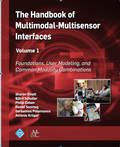Cited By
View all- Hossain Sde Goër de Herve JAbrial DEmilion RLebert IFrendo YMartineau DLesens OMephu Nguifo E(2025)Expert opinion elicitation for assisting deep learning based Lyme disease classifier with patient dataInternational Journal of Medical Informatics10.1016/j.ijmedinf.2024.105682193(105682)Online publication date: Jan-2025
- Lefter IRook LChaspari T(2024)Editorial: Multimodal interaction technologies for mental well-beingFrontiers in Computer Science10.3389/fcomp.2024.14127276Online publication date: 30-Apr-2024
- Kim YHwang JLee JJang SIm YYoon SLee S(2024)Clinical Implication of Maumgyeol Basic Biotypes–Electroencephalography- and Photoplethysmogram-Based Bwave State InventoryPsychiatry Investigation10.30773/pi.2023.038121:5(528-538)Online publication date: 25-May-2024
- Show More Cited By



